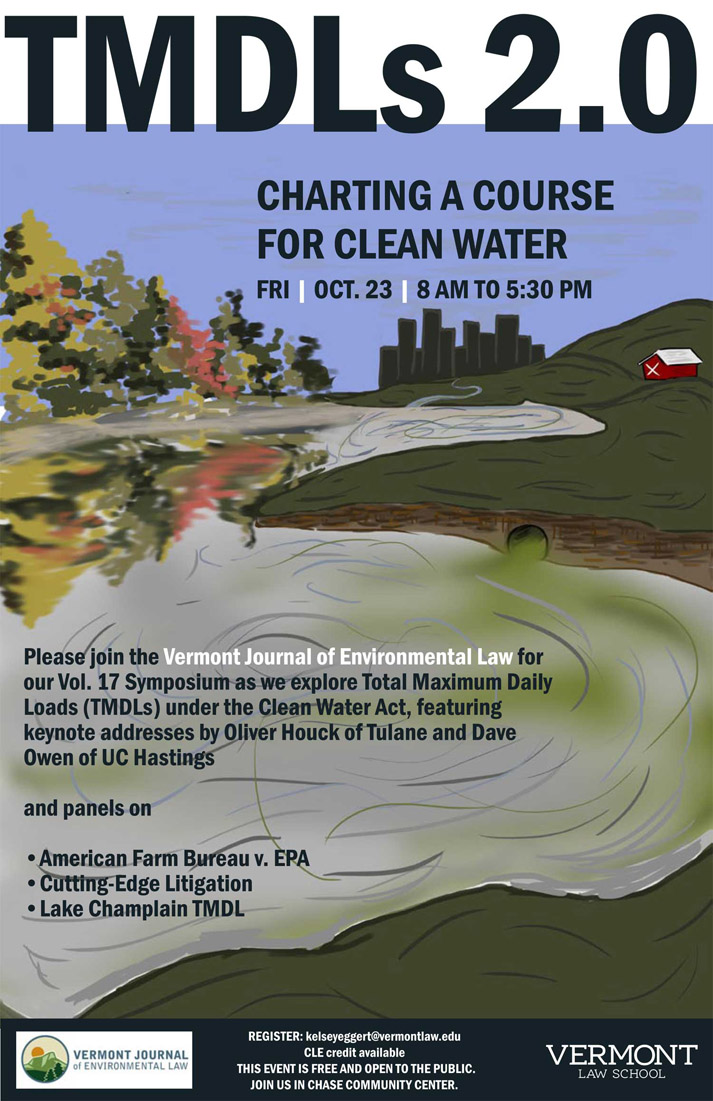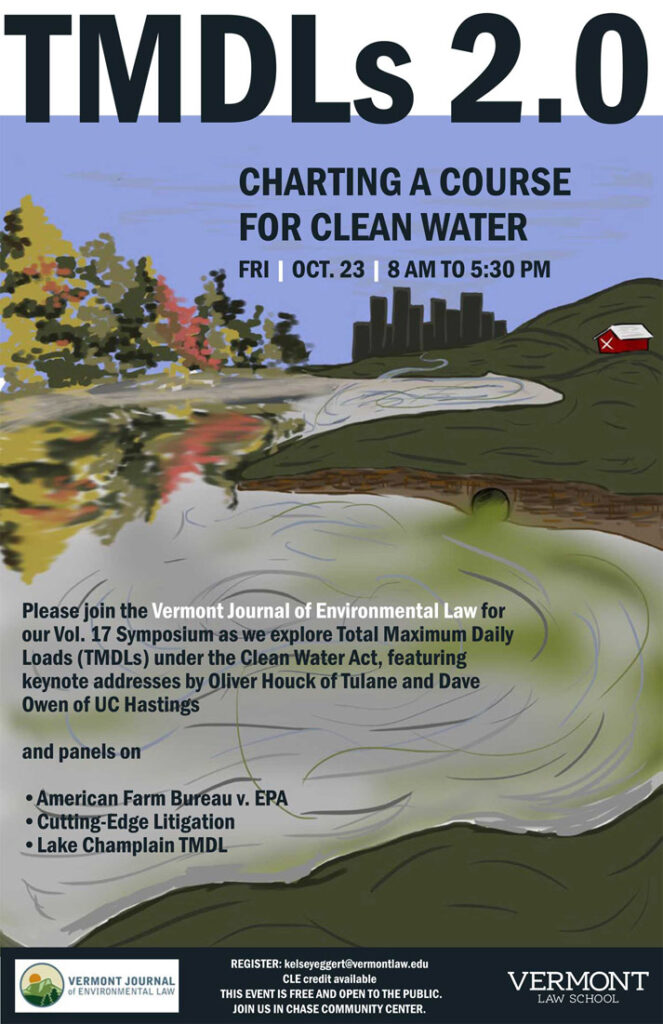This post is part of the Environmental Law Review Syndicate, a multi-school online forum run by student editors from the nation’s leading environmental law reviews.
__________________________________________
By Christopher Hyner, Managing Editor—Georgetown Environmental Law Review
Climate change. Ocean dead zones. Fisheries depletion. Species extinction. Deforestation. World hunger. Food safety. Heart disease. Obesity. Diabetes. The list goes on. There is one issue at the heart of all these global problems that is too often overlooked by private individuals and policy makers alike—our demand for and reliance on animal products. We can take a substantial step towards addressing all these problems simultaneously through reducing or eliminating our reliance on meat and dairy products. This begs the question — what are the United States’ major governmental environmental policy enforcers doing to address animal agriculture’s contribution to climate change, if anything? This piece briefly highlights two things: (1) animal agriculture is a leading cause of many major environmental problems we face globally and domestically—most importantly, climate change; and (2) animal agriculture is too often left out of the policy discussion.
First, the interconnectedness of animal agriculture and the environment.
A multitude of environmental problems our planet faces share a common instigator: animal agriculture and our reliance on meat and dairy products. According to the United States Department of Agriculture (USDA), global agriculture—dominated by livestock production and the grains grown to support it—accounts for 30% of greenhouse gas emissions.[1] A 2006 study by the United Nation’s Food and Agriculture Organization (FAO) finds that 18% of global greenhouse gas emissions is directly attributable to livestock production, which is more than the emissions attributable to the entire transportation sector.[2] Whichever number is relied upon, agricultural emissions are only going to increase as rising incomes and urbanization drive a global dietary transition towards increased consumption of meat and dairy products.[3] The growing demand for animal agriculture is expected to be a major contributor to a roughly 80% increase in global greenhouse gas emissions from the agricultural sector.[4] This means that animal agriculture must be a central element of our efforts to mitigate climate change.
In addition to being a major contributor to climate change, animal agriculture is also one of the leading causes of many other environmental issues, including overfishing, destruction of wildlife, deforestation, and depletion of freshwater resources to hydrate livestock or irrigate fodder. According the FAO approximately 75% of the world’s fisheries are either exploited or depleted[5] due to fishing, which will likely lead to the complete depletion of currently fished fish stocks by 2048.[6] As to wildlife, in order to protect the interests of primarily the livestock industry, the USDA and Bureau of Land Management sponsor programs to kill or entrap wildlife that threaten the industry’s bottom line.[7] This has led to the decimation of wolf populations in the Pacific Northwest[8] and the mass round up of wild horses in the Midwest, which compete with cattle and sheep to graze on public lands.[9] With regard to deforestation, the World Bank has found that animal agriculture is responsible for roughly 90% of the razing of the Brazilian Amazon.[10] Lastly, but likely most critically, animal agriculture is the number one consumer of fresh water by a significant margin. Animal agriculture consumes on average 55 trillion gallons of water annually—more than 520 times the water used in hydraulic fracturing. [11] On a micro level, it takes roughly 5,000 gallons of water to produce 1lb. of beef.[12]
Second, the policies . . . or lack thereof.
Animal agriculture is a significant contributor, arguably the most significant, to a variety of pressing environmental issues. Despite the magnitude of the problem, relatively few global and national policies addressing the environmental effects of animal agriculture exist, and those that do exist are grossly inadequate. Federal agencies, specifically, have neglected their statutory authority to reduce greenhouse gas emissions from the animal agriculture industry.
The agency primarily responsible for regulating animal agriculture, the United States Department of Agriculture, fails to adequately address animal agriculture in its climate plan.
On April 23rd, 2015, Tom Vilsack, Secretary of the U.S. Department of Agriculture, unveiled the Agency’s “Building Blocks for Climate Smart Agriculture & Forestry” plan. The plan is primarily designed to “help farmers, ranchers, and forest land owners respond to climate change.[13] The USDA draws its authority to address climate change from the recent enactment of the Agricultural Act of 2014, or the “Farm Bill.”[14] Interestingly, the only reference to climate change in any provision of the most recent Farm Bill is in its reauthorization of the Office of International Forestry under Section 2405(d) of the Global Climate Change Prevention Act of 1990.[15]
USDA’s strategic climate plan, which grants that “[t]he dominant drivers of land use emissions of carbon are the conversion of forest and grassland to cropland and pasture” for animal agriculture, fails to establish concrete measures to reduce greenhouse gas emissions from animal agriculture.[16] The climate plan instead relies on voluntary conservation programs that provide technical assistance for resource management to encourage the animal agriculture industry to reduce greenhouse gas emissions.[17] One building block of the plan recommends the deployment of anaerobic digesters, lagoon covers, composting, and solids separators to reduce emissions from livestock—the equivalent of telling the industry to voluntarily change their light bulbs and to recycle more.[18] Another building block encourages rotational grazing management of livestock even though it has been shown that grazing makes less sense than Concentrated Animal Feeding Operations (CAFOs) in terms of accounting for emissions and overall sustainability.[19] These voluntary measures inadequately address animal agriculture’s contribution to climate change.
The two primary remedial measures the USDA identifies to curtail greenhouse gas emissions—improved agricultural management practices and nitrous oxide (N2O) and methane (CH4) sequestration—do not go far enough. Although USDA notes that improved agricultural management practices can have a potentially significant role in addressing the atmospheric build-up of greenhouse gas emissions, it admits that these benefits will be realized over the next century.[20] This is an essential step, but additional measures must be taken that will reduce greenhouse gas emissions in the short term to avoid the catastrophic effects of climate change.
Of particular concern is animal production’s contribution to N2O (nitrous oxide) and CH4 (methane) emissions. With both eyes on the economic wellbeing of the animal agriculture industry and ensuring that current levels of production are maintained, USDA looks to “technological advancement” as the pathway for reducing NO2 and CH4 emissions.[21] The USDA identifies sequestration capabilities as the key to reducing NO2 and CH4 emissions. The Agency, however, alleges that it does not know enough to specify any concrete practices to mitigate climate change, focusing on unknown economic consequences sequestration methods may have on the producer.[22] The USDA emphasizes that GHG mitigation is one of a number of conservation issues facing land management.[23] “Soil and water quality, wildlife resilience and sustainability, air quality,” among others are noted, and tradeoffs must be identified and evaluated in order to design effective programs that address climate change.[24] In other words, USDA evades imposing concrete measures to curtail N2O and CH4 emissions until it has a better understanding of whether such mitigation will have a negative impact on the industry’s economic viability as well as on attempts to address other conservation issues.
Likewise, the Obama Administration fails to adequately address animal agriculture in the Climate Action Plan.
The Obama Administration’s Climate Action Plan narrowly focuses on energy production with no mention of animal agriculture except as it may relate to “agricultural activities” in the release of nitrous oxide.[25] What the Climate Action Plan fails to tell us is that livestock is responsible for 65% of all human-related emissions of N20, which has 296 times the global warming potential of carbon dioxide.[26] Moreover, though carbon dioxide comprises a large percentage of greenhouse gas emissions, the Plan fails to explain that a substantial portion of those emissions are directly tied to the production life cycle of meat and dairy products.[27] These climate plans are simply lacking in generating sound policies that include strategies to reduce animal agriculture’s contribution to climate change.
Efforts to reduce carbon emissions from fossil fuels are certainly vital to addressing climate change. The administration’s policy picture, however, fails to address one of the leading causes of human-related greenhouse gas emissions by not directly curtailing emissions from animal agriculture. Animal agriculture is hardly mentioned by the agencies charged with developing policies and regulations to mitigate the negative impacts of not only climate change, but also other environmental and public health issues.
Concrete policies addressing animal agriculture’s environmental effects need to be created and implemented. The administration has several tools at its disposal to address this issue. First, the Obama Administration can pressure the USDA to redraft and implement a more sophisticated plan to cut greenhouse gas emissions from livestock production, much in the way the Environmental Protection Agency was charged in generating the Clean Power Plan in targeting fossil fuel emissions from power plants.
Second, eliminate all subsidies to animal agriculture and impose a meat tax. In his book, Meatonomics, David Simon spells out how eliminating subsidies and reforming taxes can force us to pay the true cost of meat and dairy products as well as put more money back into the taxpayers’ pockets.[28] In the United States, taxpayers support upwards of $38.4 billion a year in subsidies to animal food production and assume over $400 billion of externalized costs associated with animal food production including subsidies, healthcare costs, environmental costs, animal cruelty, and fish production.[29] Eliminating subsidies would rid our food system of market distortions and allow the market principles of free trade—the principles that govern our economy—to readjust our consumption patterns towards healthier and environmentally aligned products.[30]
All in all, if we want to make serious gains in minimizing harms to the environment and public health, we need concrete policies that take a serious stance on minimizing animal agriculture.
Click here to see the original post and leave a comment.
_______________________________________
[1] USDA, USDA Climate Change Science Plan 4 (2010), available at http://www.usda.gov/oce/climate_change/science_plan2010/USDA_CCSPlan_120810.pdf. These figures include contributions from land use change and deforestation for the purpose of agriculture—primarily to make land available for grazing.
[2] Henning Steinfeld et al., FAO, Livestock’s Long Shadow: Environmental Issues and Options (2006), available at http://www.fao.org/docrep/010/a0701e/a0701e00.htm. A more recent and comprehensive study published by Worldwatch Institute, however, finds that livestock and their byproducts actually account for 51% of worldwide human-related greenhouse gas emissions annually. Robert Goodland & Jeff Anhang, Livestock and Climate Change, World Watch Magazine, November/December 2009, at 11.
[3] David Tilman & Michael Clark, Global Diets Link Environmental Sustainability and Human Health, 515 Nature 518, 520 (2014).
[4] Id.
[5] FAO, General Situation of World Fish Stocks, http://www.fao.org/newsroom/common/ecg/1000505/en/stocks.pdf.
[6] Boris Worm et al., Impacts of Biodiversity Loss on Ocean Ecosystem Services, 314 Science 787, 790 (2006).
[7] USDA, Animal and Plant Health Inspection Service, https://www.aphis.usda.gov/wps/portal/aphis/ourfocus/wildlifedamage (last visited Oct. 15, 2015).
[8] Ralph Maughan, Wedge Wolf Pack Will be Killed because of its Increasing Beef Consumption, The Wildlife News (Sept. 28, 2012), http://www.thewildlifenews.com/2012/09/22/wedge-wolf-pack-will-be-killed-because-of-increasing-beef-consumption/.
[9] Ross W. Gorte et al., Cong. Research Serv., R40237, Federal Lands Managed by the Bureau of Land Management (BLM) and the Forest Service (FS): Issues in the 111th Congress 11 (2010); see also 157 Cong. Rec. H420 (daily ed. Jan. 24, 2011) (statement of Rep. Burton); 180 More Wild Horses Found Dead in Nevada, N.Y. Times, Oct. 12, 1988, at A15.
[10] Sergio Margulis, Causes of Deforestation of the Brazilian Amazon, The World Bank (2004), http://www-wds.worldbank.org/servlet/WDSContentServer/WDSP/IB/2004/02/02/000090341_20040202130625/Rendered/PDF/277150PAPER0wbwp0no1022.pdf.
[11] EPA, Draft Plan to Study the Potential Impacts of Hydraulic Fracturing on Drinking Water Resources 14 (Feb. 2011), available at http://www2.epa.gov/sites/production/files/documents/HFStudyPlanDraft_SAB_020711.pdf.
[12] David Pimentel et al., Water Resources: Agricultural and Environmental Issues, 54 BioScience 909, 911 (2004).
[13] USDA, Building Blocks for Climate Smart Agriculture and Forestry, http://www.usda.gov/wps/portal/usda/usdahome?contentidonly=true&contentid=climate-smart.html (last visited Oct. 15, 2015).
[14] Id.; see also Katie Hoover, Cong. Research Serv., R43431, Forestry Provisions in the 2014 Farm Bill (Pl. 113-79) (2014).
[15] 7 U.S.C. § 6704(d) (2012).
[16] USDA, supra note 1, at 3-4.
[17] USDA, USDA’s Building Blocks for Climate Smart Agriculture & Forestry—Fact Sheet (Apr. 23, 2015), available at http://www.usda.gov/documents/climate-smart-fact-sheet.pdf.
[18] Id.
[19] Id.; see also Cowspiracy (A.U.M. Films 2014).
[20] USDA, supra note 18, at 4.
[21] USDA, supra note 1, at 15-17.
[22] Id.
[23] Id.
[24] Id.
[25] Climate Change and President Obama’s Action Plan, The White House, https://www.whitehouse.gov/climate-change#section-carbon-pollution (last visited Oct. 15, 2015).
[26] Supra, note 2, at xxi.
[27] Supra, note 3.
[28] David R. Simon, Meatonomics, 166 (2013); see also Marya Torrez, Accounting for Taste: Trade Law Implications of Taxing Meat to Fight Climate Change, 27 Geo. Int’l Envtl. L. Rev. 61 (2014).
[29] Id. at Appendix B.
[30] Emiko Terazono, OECD Warns Farm Subsidies Still Too High, Financial Times (Sept. 4, 2014), http://www.ft.com/cms/s/0/a42540e4-3384-11e4-85f1-00144feabdc0.html#axzz3okCLb03e.








 ered cropsparticularly strains of corn, soybeans, and wheathave proliferated wildly since their introduction in the 1990s. Many agriculturists were attracted to the crops given their higher yields, lower water requirements, and greater resilience to weeds and other pests. However, there has been strong resistance to genetically engineered crops since their initial introduction. Often erroneously referred to as “genetically modified organisms” or “GMOs,” a crop is genetically engineered when humans insert foreign genetic material into the crop’s genetic structure in order to achieve particular traits that would not be possible to achieve through traditional crop breeding. Conversely, genetic modification is the process by which humans cross-breed particular strains of a crop to achieve desired traits and has been utilized by mankind since the dawn of agriculture.
ered cropsparticularly strains of corn, soybeans, and wheathave proliferated wildly since their introduction in the 1990s. Many agriculturists were attracted to the crops given their higher yields, lower water requirements, and greater resilience to weeds and other pests. However, there has been strong resistance to genetically engineered crops since their initial introduction. Often erroneously referred to as “genetically modified organisms” or “GMOs,” a crop is genetically engineered when humans insert foreign genetic material into the crop’s genetic structure in order to achieve particular traits that would not be possible to achieve through traditional crop breeding. Conversely, genetic modification is the process by which humans cross-breed particular strains of a crop to achieve desired traits and has been utilized by mankind since the dawn of agriculture.